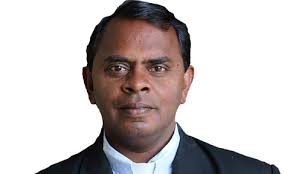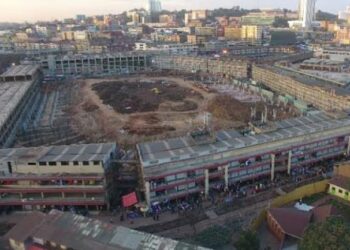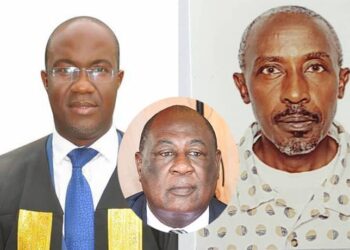Papal visits are called Apostolic Journey or Pastoral Visit and Pope St. John Paul II who made numerous visits to the nations also called it ‘Pilgrimage’. Pope being the Head of State of Vatican City State, it can also be rightly called State Visit. With such elevated names, papal journeys to particular Churches and states have special significance targeting specific objectives and goals. Popes of the modern times have made many journeys which have brought about extraordinary impact on the Churches and the countries they visited. The current Pope though advanced in age (85 years old!) does not hesitate to make tedious journeys with a packed schedule. Now his long awaited visit to South Sudan has the obvious objective—kindles peace and hope in the war torn nation.
Everyone might ask, “Is it possible to achieve peace by this single papal visit where the nation has been in conflict for decades?” Like everyone with mixed feelings, Fr. Paul Antimi, the Salesian Superior of Don Bosco missions in South Sudan says, “This papal visit is significant. It can expose to the world how the South Sudanese have suffered, cried and hoped for all this long.” With the thought of doubt he also articulates, “…At the same time, the visit may not bring a significant impact in the political and social demography of the country. The wounded nation that is divided along the ethnic lines cannot be healed by a single (papal) visit. But still the visit will bring international attention at least for a few days.”
Fr. Paul points out that the Church too has problems just like the nation and he singles out the problem of clericalism that causes division among the believers. He says, “Church too cries with the nation and its people while she too is propagating the status quo and failing to be a radical force for peace and unity among its people.” But again with hope he says, “The country will come together in a process of healing from the decades of inter-ethnic conflicts, sporadic spread of arms in the hands of civilians.…unfortunately jointly done by the Church, civil society and the rulers. In any case, the Pope’s visit will be a sign of hope for those in exile and other victims of war.” Yes, South Sudan is a mystery with many difficult questions.
“What is happening in South Sudan now?” is the frequent question asked of me by my friends and acquaintances. My answer is very obvious, “The country is in civil war for many years. They had trouble from the Arab north and now after the independence from the Arab-led government there is endless conflict among the many tribes.” Often the frustrated South Sudanese refugees burst out, “We are not easy people. I wonder when my country will be at peace. Now we have got used to it.” Numerous peace deals and formal peace agreements never deterred them fighting and destroying each other’s properties. The most recent peace agreement was signed by Salva Kiir, the president and Riek Machar, the vice-president who lead the warring factions. The signed cease-fire and power-sharing agreement in August 2018 was not fully implemented.
I live and work in Palabak Refugee Settlement among the refugees since June 2017 when a large group of refugees began to pour into Uganda as refugees fleeing from conflicts. Many of them were refugees in Uganda until 2011 when they returned to their country after independence. The new freedom and the apparent peace did not last long. There were many small conflicts, until a large-scale insurgency beginning from 2015. As I write this in mid-March 2022, at least 800 people are at the entrance of the Settlement Camp waiting to be taken to their plot of land within the zones of the settlement. As it is always, they are all women and children!
Often the international bodies and aid-agencies go into apathy in providing for them the much needed basic services and other humanitarian assistance. It also becomes a tiring experience for a pastoral worker like me. In this situation many unscrupulous so-called humanitarian workers make their living, even sustaining the conflict directly and indirectly. As it is in many other troubled parts of the world, multinational companies involved in mining and arms trade try every effort to sustain the war so as to make huge profits at the expense of people’s misery.
So what is happening in South Sudan? A few details of statistics will help us to understand the crisis in the right perspective. South Sudan has the third largest refugee crisis after Syria and Afghanistan. Over 7 million of its 11 million population are at the point of starvation. Since the conflict began sometime in 2013 and in 2015 it escalated into a large-scale war, 1 in 3 people in South Sudan have been displaced. More than 4 million citizens have been forced to flee their homes. Around 2.3 million people have escaped to neighbouring countries in search of safety, and 1.8 million are trapped inside the warring nation. Six out of ten refugees are children.
It is also sad to note that only 27% of the population can read and write and less than 5% of people have some skills that can sustain them in their life. The country consists of over 60 tribes, but they are dominated by two major tribes Dinka with Nuer between whom there is frequent political and social strife, which spills over to other tribes.
It is the yearning of every well-minded South Sudanese is to see the warring tribes coming together to rebuild the nation. Young Salesian seminarian Raymond says, “Holy Father uniting the warring groups will be the best gift of his visit. He managed to meet them together in the Vatican and let the process begin to be brought to completion. I think the Pope wants to fulfil this task. Now I really feel that the Pope loves us in trying to do this task.”
Christian population of South Sudan is considered to be 60% which includes about 2.7 million Catholics who belong to six dioceses. Political instability made pastoral work difficult to manage. Many parishes are destroyed, closed or served in a restricted way. All the dioceses are in dire need for priests and religious.
Archbishop of Juba Most Rev. Stephen Ameyu in his Easter message in April 2020 wrote: “South Sudan is a broken nation. The families of this nation are broken. The ethnic communities of this nation are broken. Individual citizens are broken. This nation needs special God’s intervention. Reconciliation is the only remedy to this broken nation.” We can all hope that the visit of the pope can encourage the Church to rebuild and bring necessary pastoral resources to improve its services. We can be sure that he will insist on unity and reconciliation among the priests and religious which is certainly a catalyst in the broken nation.
Besides the human made tragedy, in 2018 the country suffered a large-scale drought and in 2021 and 2022 it again suffered due to flooding as the banks of river Nile broke. These calamities also added more number of ‘People on the Move’. Unfortunately the neighbouring countries, Ethiopia, Democratic Republic of Congo, and The Sudan where refugees run to are in civil conflict within themselves. Often the inflation rate is over 800% which is one of the highest in the world. At the end of 2018 the United Nations declared that 7.2 million South Sudanese are in need of humanitarian assistance. Later this situation was made worse by the Coronavirus pandemic. It is estimated that over 400,000 people have been killed in South Sudan from 2013 to 2019. Of course there are no clear statistics on killings after 2019 to-date.
Pope Francis is hailed as the ‘Pope of the Margins.’ He has visited remote and obscure places of the world; some of them are often considered unsafe for visits. From the beginning of his pontificate in 2013 he has already made five visits to Africa: Kenya, Uganda and the Central African Republic in 2015; Egypt in 2017; and twice in 2019, visiting first Morocco and then a week-long visit that took in Mozambique, Madagascar and Mauritius. Previously Pope St. John Paul II visited The Sudan in 1993, but the current territory of the South Sudan has never been visited by a pontiff.
South Sudan became an independent nation on 9th July 2011 following a referendum in January 2011 when people overwhelmingly voted to be independent from The Sudan with 98.83% of votes. But unfortunately their deep-seated desire to be an independent nation failed to maintain peace ever since its freedom from the Arab-led north. Now it is a hope that the visit of Pope Francis from 5 – 9 July 2022 will kindle peace in the mind and hearts of the people. The visit coincides with the 11th anniversary of its independence on the 9th July as the Pope would be concluding his Apostolic Visit. It is also significant to note that he will be coming from the Democratic Republic of Congo after his visit to a nation that too has its own troubles of political instability, especially in the east of the nation. Uganda also hosts about 400,000 Congolese refugees for the number of years.
Pope Francis has championed for peace in South Sudan for the past several years. He has made repeated preparation for his ‘peace pilgrimage’ to the nation. Many times they were cancelled on issues of security. Everyone remembers with tears his plea for peace when he humbled himself and kissed the feet of South Sudanese leaders. Now everyone believes that the forthcoming journey to South Sudan and his participation in the anniversary of independence on 11 July is the culmination of his peace efforts.
Holy Father seems to say, ‘I touched your feet and begged for peace when you were with me at the Vatican, my home. Now I come to your own homestead and again touch your feet and beg for peace.’ These unspoken words of the Pope can go into the veins of the leaders and humble them down. This peace pilgrimage can be a final and definitive call of the Church on the leaders to give up their ego, suppress their pride and kindle in their hearts thoughts of peace and hope.
Fr. Lazar Arasu SDB
Chaplain in Palabek Refugee Settlement Camp.
Do you have a story in your community or an opinion to share with us: Email us at editorial@watchdoguganda.com













